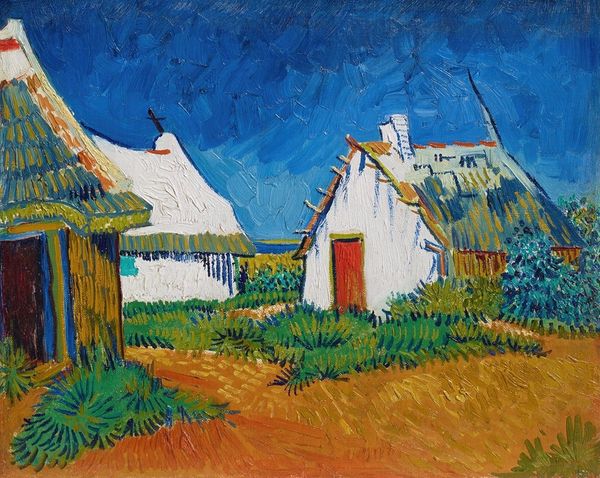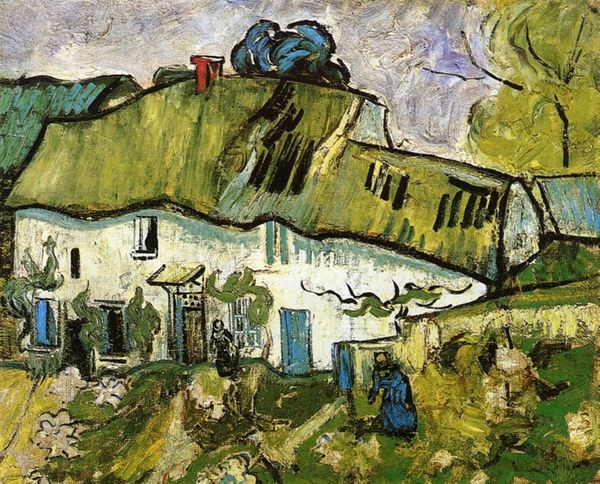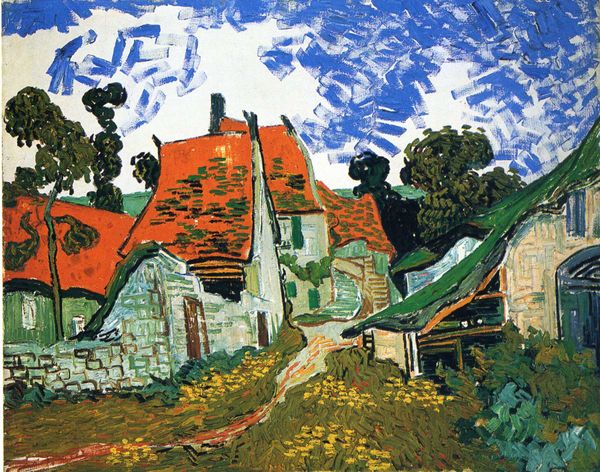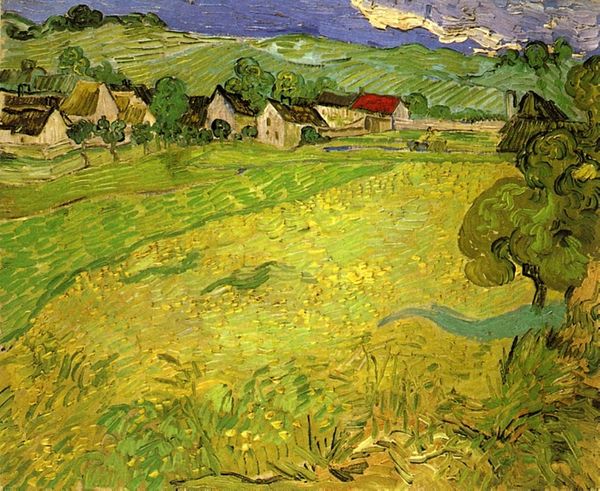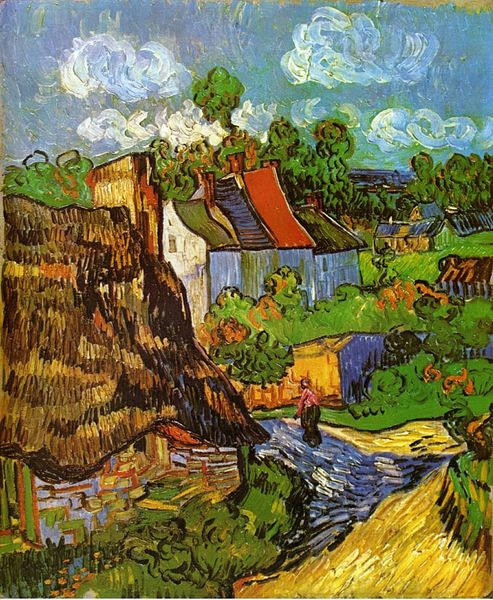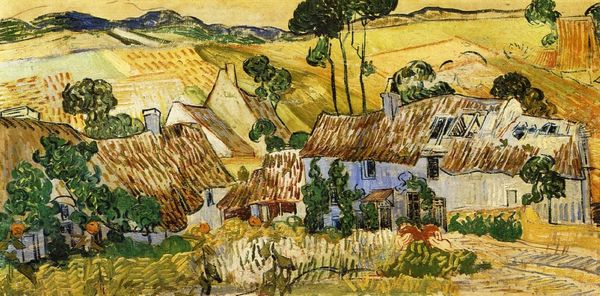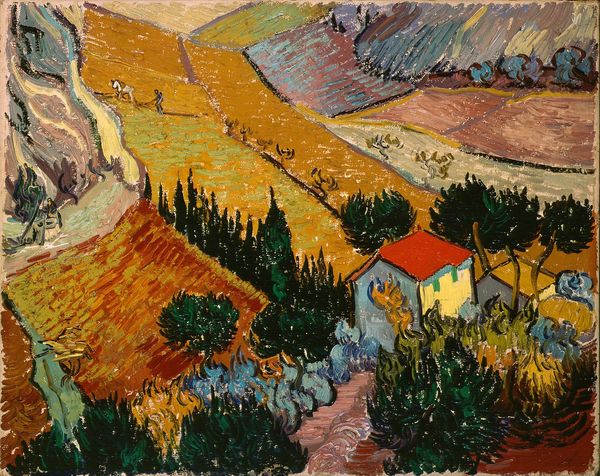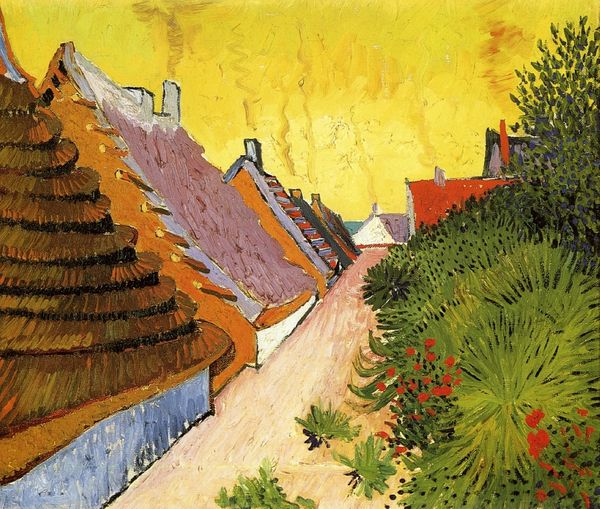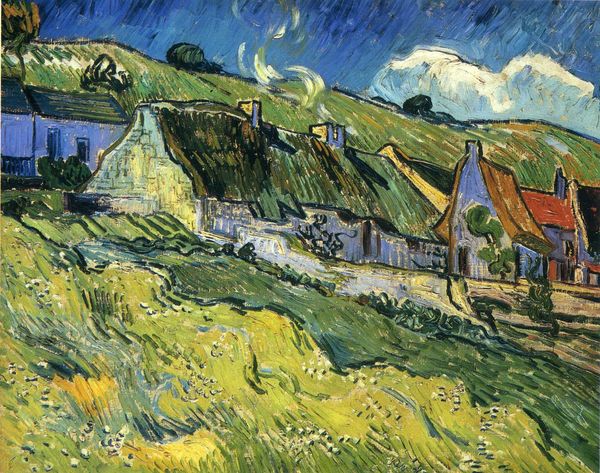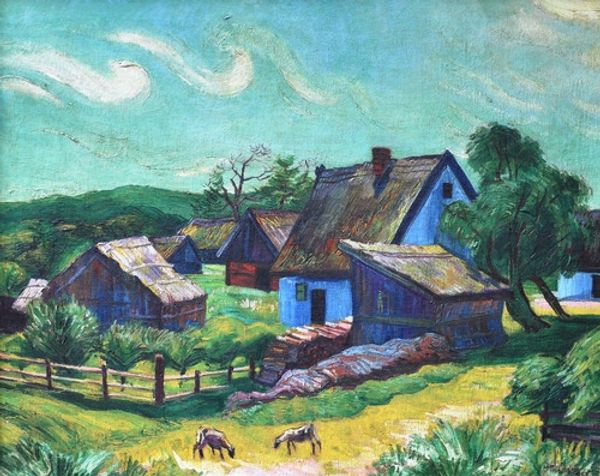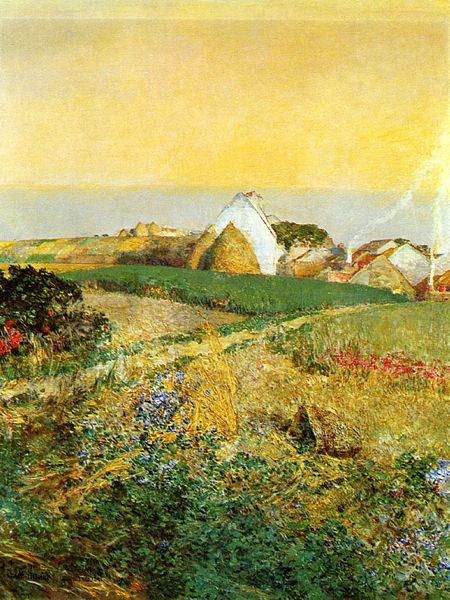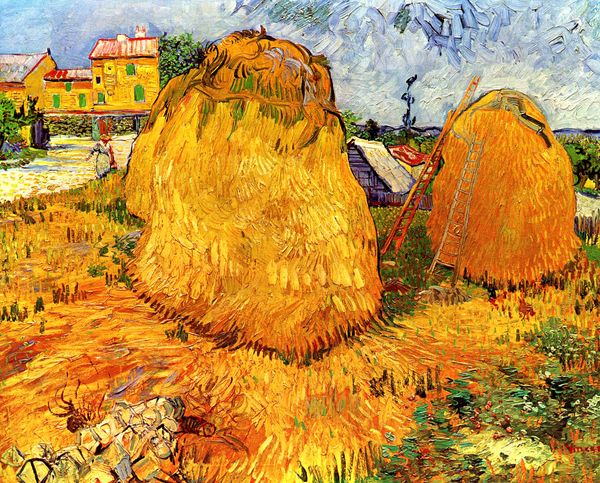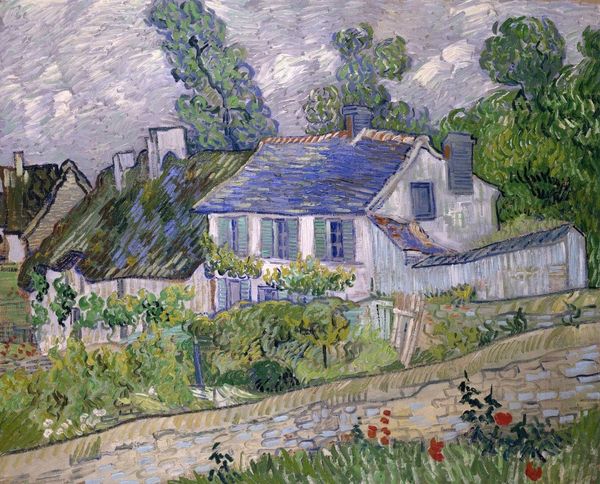
painting, oil-paint, impasto, architecture
#
rural-area
#
painting
#
grass
#
oil-paint
#
landscape
#
oil painting
#
impasto
#
geometric
#
post-impressionism
#
modernism
#
architecture
Dimensions: 33.5 x 41.5 cm
Copyright: Public domain
Curator: Before us hangs Van Gogh's "Three White Cottages in Saintes-Maries," painted in 1888, now residing here at the Kunsthaus Zürich. I'm immediately drawn to the thick, almost sculptural quality of the paint. Editor: It feels… weighty. The heaviness of the sky presses down, yet the white cottages push back with a surprising luminescence. Is it simply the paint, or are we seeing something more here? Curator: Look closely at Van Gogh's impasto technique. Each stroke seems deliberate, building texture and light. These cottages, presumably humble dwellings, are rendered with the same intensity as one might approach a portrait of royalty. He’s elevating the everyday through sheer labor. Editor: Labor indeed, but also a choice of imagery. White, of course, is culturally loaded. It speaks of purity, even innocence. In the context of rural Saintes-Maries, are these cottages meant to represent a simpler, untainted existence? A sort of rural ideal that modernity threatens? Curator: I'd argue the "purity" comes more from the reductive, almost geometric forms. Van Gogh strips the architecture to its essence. Think of the social and economic realities of these dwellings: built with local materials, undoubtedly shaped by the needs of the inhabitants. He shows an honest depiction of that. Editor: Perhaps, but the sharp contrast between the stark white and the brooding sky suggests something more than just architectural pragmatism. Those crosses topping the roofs could signal divine protection, but also point toward darker superstitious beliefs—a human need for both comfort and answers amid life’s uncertainties. Curator: That is insightful. The thatched roofs themselves – note the careful detail in how he renders the thatching material, how readily it will degrade or invite rot. He seems almost obsessed with demonstrating their craftmanship. They become emblems of a fading agricultural lifestyle challenged by industrial progress, as he might have witnessed in his time. Editor: So we see the cottage transformed, not merely as a dwelling, but as a vessel for memory. Each brushstroke carrying the weight of tradition and cultural significance. A symbol against the onrushing forces of change. Curator: Ultimately, Van Gogh makes us consider what labor produces not only physical structures but cultural narratives. The painting urges us to confront these intertwined stories. Editor: Yes, an artwork speaking of how much meaning can reside within seemingly humble architectural shapes.
Comments
No comments
Be the first to comment and join the conversation on the ultimate creative platform.
